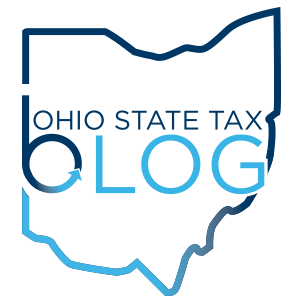Ohio Pending Budget Bill reduces individual income tax rates, eliminates sales tax exemptions, and extends business tax credits; heads to Gov. DeWine for final approval.
The Ohio Budget Bill for FY 2026-27 (H.B. 96) was agreed to by the Ohio House and Senate in Conference Committee and now awaits Governor DeWine’s signature. Consistent with the direction commenced a few years ago, the Budget includes further reductions in Ohio’s individual income tax rate, which would be reduced to 2.75% in 2026. The new flat tax rate would apply to income over $26,050, although the 3% rate would continue to apply to business income.
This rate cut continues Ohio Republicans’ mission to reduce and eventually eliminate the Ohio individual income tax, claiming this will make Ohio more competitive for business. This reasoning is curious considering business income – including income earned by small businesses through pass-through entities – will be taxed at a higher rate than non-business income. This will warrant appropriate planning.
To pay for this nearly $1.15 billion tax cut, the Budget eliminates several sales / use tax exemptions. Purchases of the following items, among others, will become taxable on January 1, 2026:
- Newspapers
- Data center property
- Promotional and advertising materials, including property that describes and prices products
- Refrigerated vending machines
- Equipment used to make printed advertisements and materials
- Telecommunication services used by a qualified call center
- Property used by electronic publishing providers
Additionally, the 25% refund for electronic information service providers will be eliminated.
One sales / use tax exemption – the casual sale exemption – will be expanded. A casual sale will now include both in-person and online sales and, when an auctioneer is involved, the exemption is only disallowed if the sale occurs at the auctioneer’s physical place of business. Previously, this exemption was unavailable if the sale was facilitated by an auctioneer regardless of where the sale occurred.
The Budget eliminates interest on refunds claimed by direct pay permit holders and caps the vendor discount for tax collection to $750 per month.
The Budget authorizes and extends several credits and incentives, including:
- Ohio Opportunity Zone credits increased from $25M to $50M per fiscal year
- Transformational Mixed-Use Development (TMUD) grants increased from $100M to $125M per fiscal year
- Historic Rehabilitation credits increased to 35% of qualifying projects located in municipalities with population of less than 300,000.
The final step for enacting the Budget is approval from Governor DeWine, who indicated over the weekend that he will use his line-item veto power – but without any indication of what might get cut. The Comparison Document (dated June 25, 2025) published by the Ohio Legislative Service Commission summarizing this extensive bill is available here.
